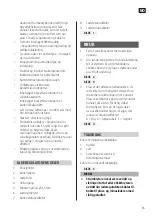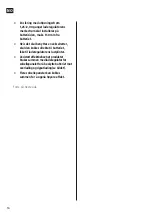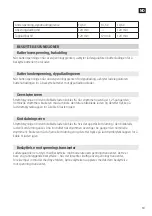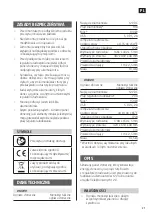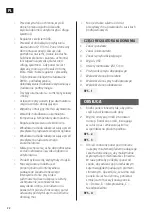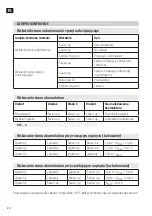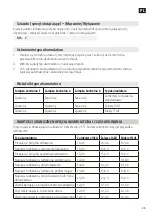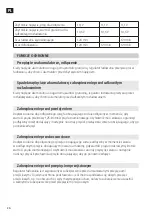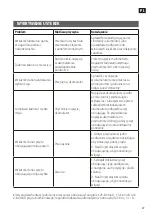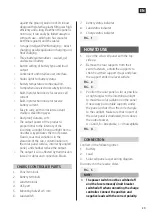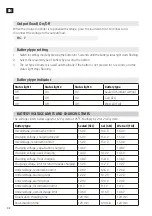
EN
29
7. Battery status indicator
8. Load status indicator
9. Charge status indicator
FIG. 1
HOW TO USE
1. Open the solar cell panel with the top
side up.
2. Remove the four supports from their
velcro fasteners, unfold the supports to
stretch out their support straps and place
the support ends on a level surface.
FIG. 2
FIG. 3
3. Position the solar panel as far as possible
at right angles to the incoming sunlight
to maximise solar radiation on the panel.
If necessary put suitable supports under
the panel so that it has the correct angle
to the sunlight. Make sure that no part of
the solar panel is shadowed, this reduces
the output power.
A = Good, B = Acceptable, C = Unacceptable
FIG. 4
CONNECTION
Connect in the following order:
1. Battery
2. Load
3. Solar cell panel as per wiring diagram.
Disconnect in the reverse order.
FIG. 5
NOTE:
• The power switch must be switched off
and the fuse removed/circuit breaker
switched off when connecting the charge
controller. Connect the positive and
negative leads with the correct polarity.
against the ground, wall or roof. Its robust
design with protective plastic film gives high
efficiency and a long life. When the panel is
not in use, it can easily be folded away to a
compact case – which also has space for
both the regulator and the cables.
• 3-stage intelligent PWM charging – boost
charging, peak/equalisation charging and
float charging.
• Three battery alternatives – sealed, gel
and wet-cell battery.
• Button setting of battery type and load
output.
• Convenient and intuitive user interface.
• Status lights for battery status.
• Battery temperature compensation.
• Comprehensive electronic safety functions.
• Built-in protection diode for reverse cell
current.
• Built-in protection diode for reverse
battery current.
• Easy to carry, with corrosion-resistant
stainless steel lifting eyes.
• Dustproof, durable, soft.
• The output power of the product is
proportional to the intensity of the
incoming sunlight. Strong sunlight from a
cloudless sky produces the most power.
Clouds, seasonal variations in the
elevation of the sun, contamination on
the solar panel surface, incorrectly angled
panel, and shadow reduce the output.
• The output is also affected by transmission
losses in cables and connection blocks.
CHARGE CONTROLLER PARTS
1. Panel terminals
2. Battery terminals
3. Load terminals
4. USB port
5. Mounting hole
Ø
4.5 mm
6. Load switch

